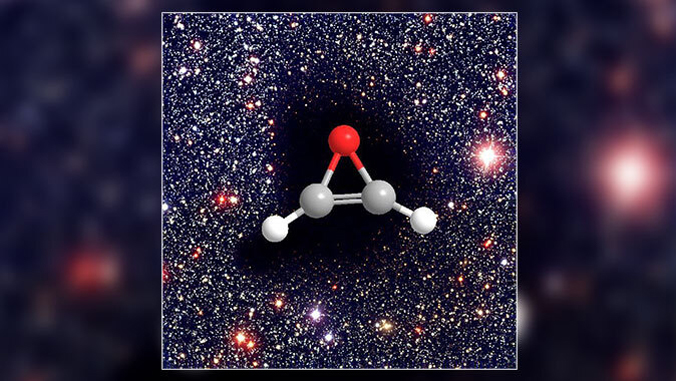
A problem that has puzzled the scientific community for more than 50 years has finally been solved by researchers from the University of Hawaiʻi at Mānoa, Florida International University and Ruhr University Bochum (Germany).
Several UH Mānoa Department of Chemistry scientists, led by Professor Ralf I. Kaiser discovered a new method to produce and detect the smallest antiaromatic heteroaromatic (characteristics of the compound) called oxirene under laboratory conditions that simulate molecular clouds and star forming regions in deep space.
The cyclic oxirene is a key reactive ingredient in interstellar environments and is considered one of the most mysterious molecules of organic transients. Previously dubbed as "not synthesizable" by organic chemists, the researchers prepared oxirene via energetic processing of extremely low temperature ices along with resonant energy transfer to the icy matrix and observed the molecule through a high-tech mass spectrometry tool exploiting tunable vacuum photoionization—the process in which an ion is formed from the interaction of a photon with an atom or molecule—in UH Mānoa's W.M. Keck Laboratory in Astrochemistry.
The preparation of the antiaromatic oxirene molecule advances the fundamental experimental and theoretical understanding of the chemical bonding and stability of these types of molecules and paves the way for future synthesis of similar molecules in extreme environments. The discovery of oxirene in such an extreme environment suggests that it represents a worthwhile astronomical target to be searched for in the gas phase by radio telescopes such as the Atacama Large Millimeter/submillimeter Array and the James Webb Space Telescope.
"These experiments reveal that molecular clouds and star forming regions can be exploited as natural laboratories where exotic molecules such as antiaromatics, which are traditionally very unstable on Earth, can be synthesized easily under the low temperature chemical and physical conditions," Kaiser said. "The identification of the exotic oxirene molecule will trigger extensive laboratory studies to synthesize and to identify more hitherto elusive, unstable molecules thus increasing our knowledge of the molecular structure and chemical bonding of these species."
"Sophisticated electronic structure calculations provided vital guidance on the stability and adiabatic ionization energies (intrinsic property of a molecule) of oxirene along with its isomers," added Alexander M. Mebel (Florida International University) and André K. Eckhardt (Ruhr University Bochum, Germany).
The findings have been published in Science Advances in March 2023. The research team includes Kaiser, postdoctoral fellows Jia Wang and Joshua H. Marks and W.M. Keck Laboratory in Astrochemistry Assistant Director Andrew Turner.
The Department of Chemistry is housed in UH Mānoa's College of Natural Sciences.






